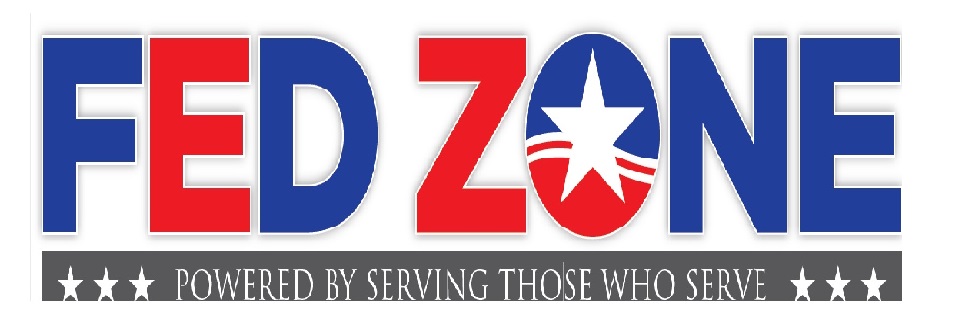Employees Should Understand Limits on TSP Contributions and Not Lose Agency Matching

Edward Zurndorfer-
All Federal employees and members of the Uniformed Services should be aware of and understand the limits on the amount of contributions they can make to the Thrift Savings Plan (TSP) each year. This column discusses the Internal Revenue Code’s (IRC) annual limit on elective deferrals. These deferrals are contributions made from an employee’s or uniformed service member’s paycheck and explain how this limit may affect TSP matching contributions made to the accounts of employees covered by the Federal Employees Retirement System (FERS) and certain uniformed services members covered by the Blended Retirement System (BRS).
Elective Deferrals and Annual Limits
Elective deferrals are the amounts an employee asks his or her employer to deduct from his or her salary and contribute to an employer-sponsored retirement plan. Note that all tax-deferred traditional contributions that are made to the traditional TSP and all after-taxed Roth TSP contributions are considered elective deferrals. The combined total of an employee’s traditional before-taxed contributions and Roth after-tax contributions cannot exceed the elective deferral limit for the year. For the year 2022, the elective deferral limit is $20,500.
Elective deferrals do not include agency/uniformed service automatic (one percent) or agency /uniformed service matching contributions (maximum four percent) because these contributions are not considered part of an employee’s salary or uniformed service member’s compensation. Uniformed service members’ traditional TSP contributions from tax-exempt pay earned in a combat zone are not included in the annual elective deferral limit.
Internal Revenue Code (IRC) Section 402 limits the amount of income an employee may elect to defer under all employer-sponsored retirement plans during a tax year, which is normally from January 1 through December 31st of that calendar year. The elective deferral limit for 2022 is $20,500. Note that when an employee or uniformed service member reaches the annual elective deferral limit at any point in the calendar year, the employee’s or uniformed service member’s TSP contributions must be suspended for the remainder of the year. The TSP system will not allow any employee/uniformed service member’s contributions to be processed that will cause the total amount of employee/uniformed service contributions to exceed the annual elective deferral limit. If the contributions exceed the limit, then the employee/uniformed service member payroll office must ensure that contributions resume the first pay date in the following year.
Once the employee/uniformed service member has reached the annual elective deferral limit, agency/uniformed service matching contributions are suspended for the remainder of the calendar year. But agency/uniformed service member’s one percent of gross pay automatic contributions will continue. This is because agency/uniformed service matching contributions are based on employee/service member contributions while the automatic 1% agency/service member contributions will be made whether or not an employee/uniformed service member contributes.
Making the Maximum Employee/Uniformed Service Member Contributions& Still Receive the Maximum Agency/Uniformed Service Matching Contribution Each Year
To receive the maximum agency/uniformed service matching contribution in any calendar year, an employee/uniformed service member must contribute at least five percent of his or her basic pay each pay date during the year. To determine a dollar amount (not a percentage) an employee/uniformed service member should choose a dollar to contribute each pay date so that the employee/service member contributions are spaced out over all the remaining pay dates in the year, employee/uniformed service member should use the “How much can I contribute?” calculator on the TSP Web site or the worksheet below should be used.
Your Estimate.
For Item 1, enter the IRC elective deferral limit for the year in which your new election will be effective.
For Item 2, log into My Account at tsp.gov to find the total amount of your year-to-date elective deferrals. (This is the total amount of your employee contributions minus any traditional contributions from tax-exempt pay.)
For Item 4, count the number of pay dates remaining in the calendar year, beginning with the pay date following the end of the first full pay period after you make your election.
| Example | Your Estimate | |
| 1. Enter the IRC elective deferral limit for 2022 | 1. $20,500 | $ __________ |
| 2. Enter all elective deferrals made in 2022 prior to the effective date of your new election. | 2. $ 0.00 | $ __________ |
| 3. Subtract Line 2 from Line 1. | 3. $20,500.00 | $ __________ |
| 4. Enter the number of salary payments you will receive in 2019 from which your new election will be deducted | 4. 26* | __________ |
| 5. Divide Line 3 by Line 4. | 5. $788.46 | $ __________ |
| 6. Round up the result in Line 5 to the next dollar to determine the whole dollar amount you should contribute each pay date for the rest of the year (which you will enter on your Form TSP-1 or TSP-U-1). | 6. $788.00 | $ __________ |
*You can confirm the number of salary periods with your agency or service.
Finally, note the following three items with regard to employee elective deferrals during 2022:
- “Make-up” employee contributions. If, due to an error, an agency or uniformed service failed to make employee or uniformed service member contributions in a previous year and the employee/uniformed service member makes up these contributions during 2022, then the make-up contributions do not count against the $20,500 elective deferral limit for 2022.
- “Catch-up contributions” and the elective deferral limit. “Catch-up” contributions are payroll deductions that participants who are age 50 or older may be eligible to make in addition to regular employee contributions. Participants need to make a separate election to do catch-up contributions each year. “Catch-up” contributions do not count against the IRC elective deferral limit. For 2022, the maximum “catch-up” contribution is $6,500.
- Contributions to both a civilian and a uniformed services TSP account. The elective deferral limit applies to the total contributions made during the year to both accounts. During the year, the TSP will apply the limits to each account separately and will not allow an employee/uniformed service member to contribute an amount to either account that exceeds the limit. In January, TSP will return the excess contribution first made to the uniformed services account.
Edward A. Zurndorfer is a CERTIFIED FINANCIAL PLANNER™ professional, Chartered Life Underwriter, Chartered Financial Consultant, Chartered Federal Employee Benefits Consultant, Certified Employees Benefits Specialist and IRS Enrolled Agent in Silver Spring, MD. Tax planning, Federal employee benefits, retirement and insurance consulting services offered through EZ Accounting and Financial Services, and EZ Federal Benefits Seminars, located at 833 Bromley Street – Suite A, Silver Spring, MD 20902-3019 and telephone number 301-681-1652. Raymond James is not affiliated with and does not endorse the opinions or services of Edward A. Zurndorfer or EZ Accounting and Financial Services. The information has been obtained from sources considered to be reliable, but we do not guarantee that the foregoing material is accurate or complete. While we are familiar with the tax provisions of the issues presented herein, as Financial Advisors of RJFS, we are not qualified to render advice on tax or legal matters. You should discuss tax or legal matters with the appropriate professional.
